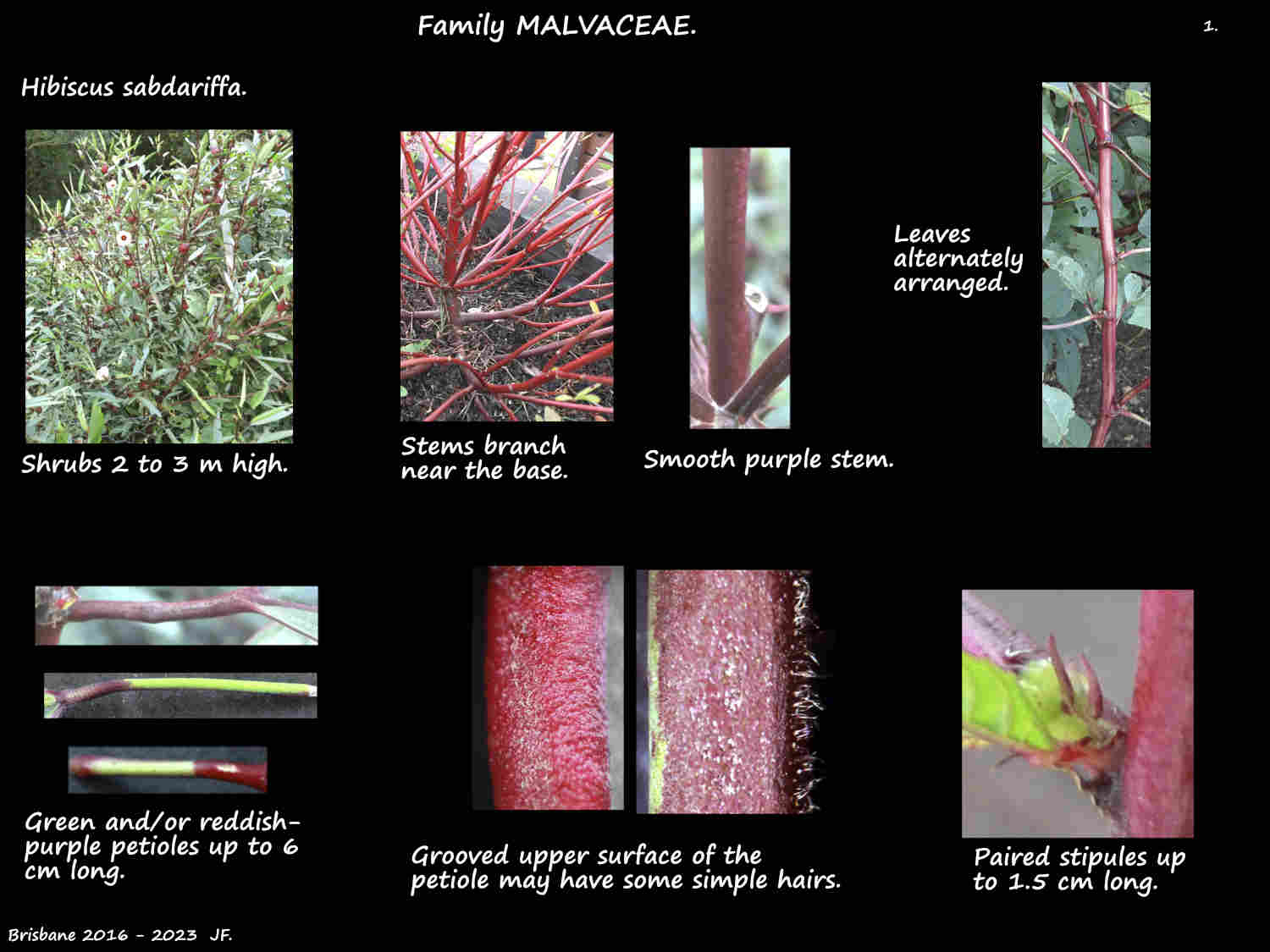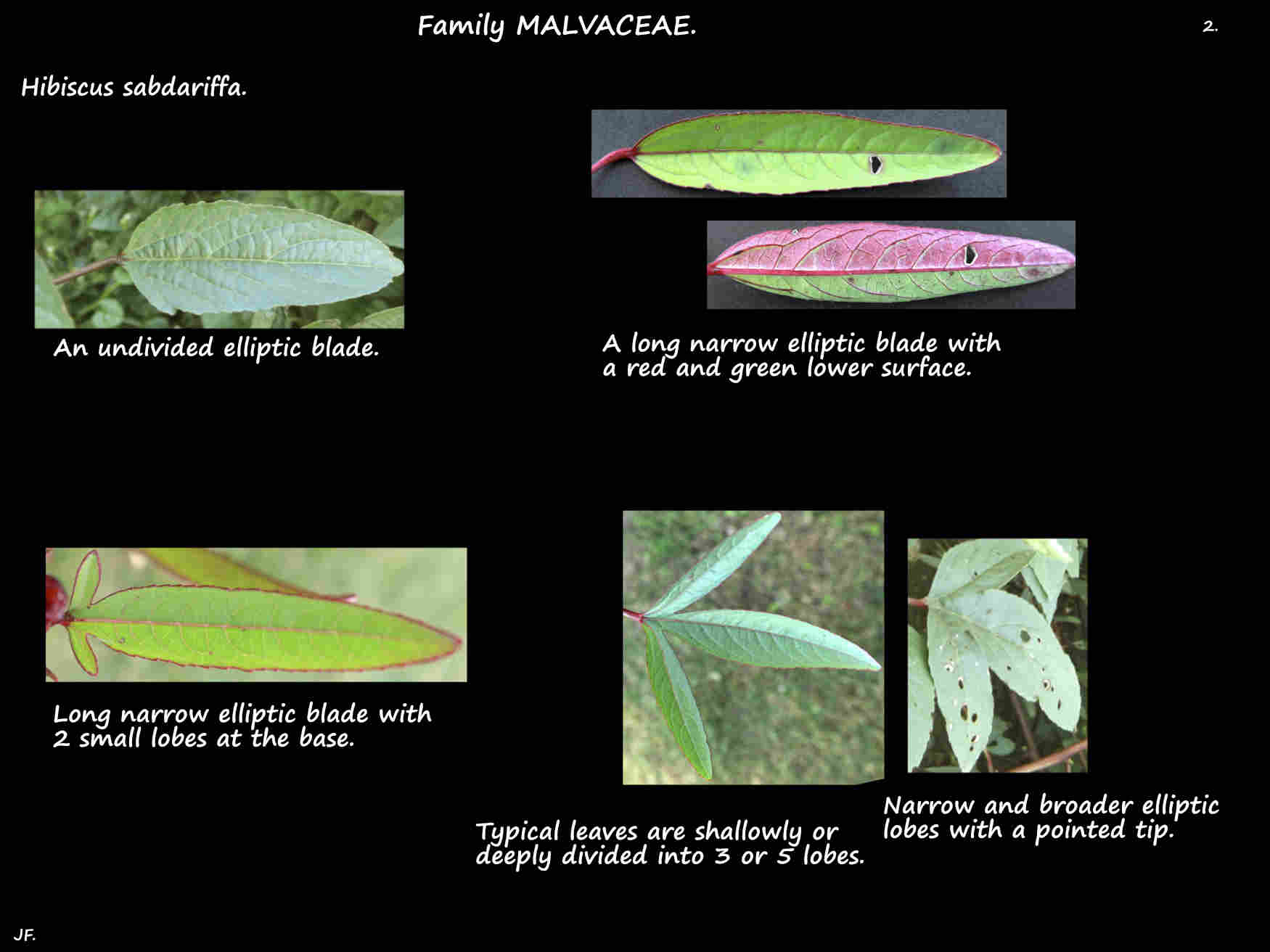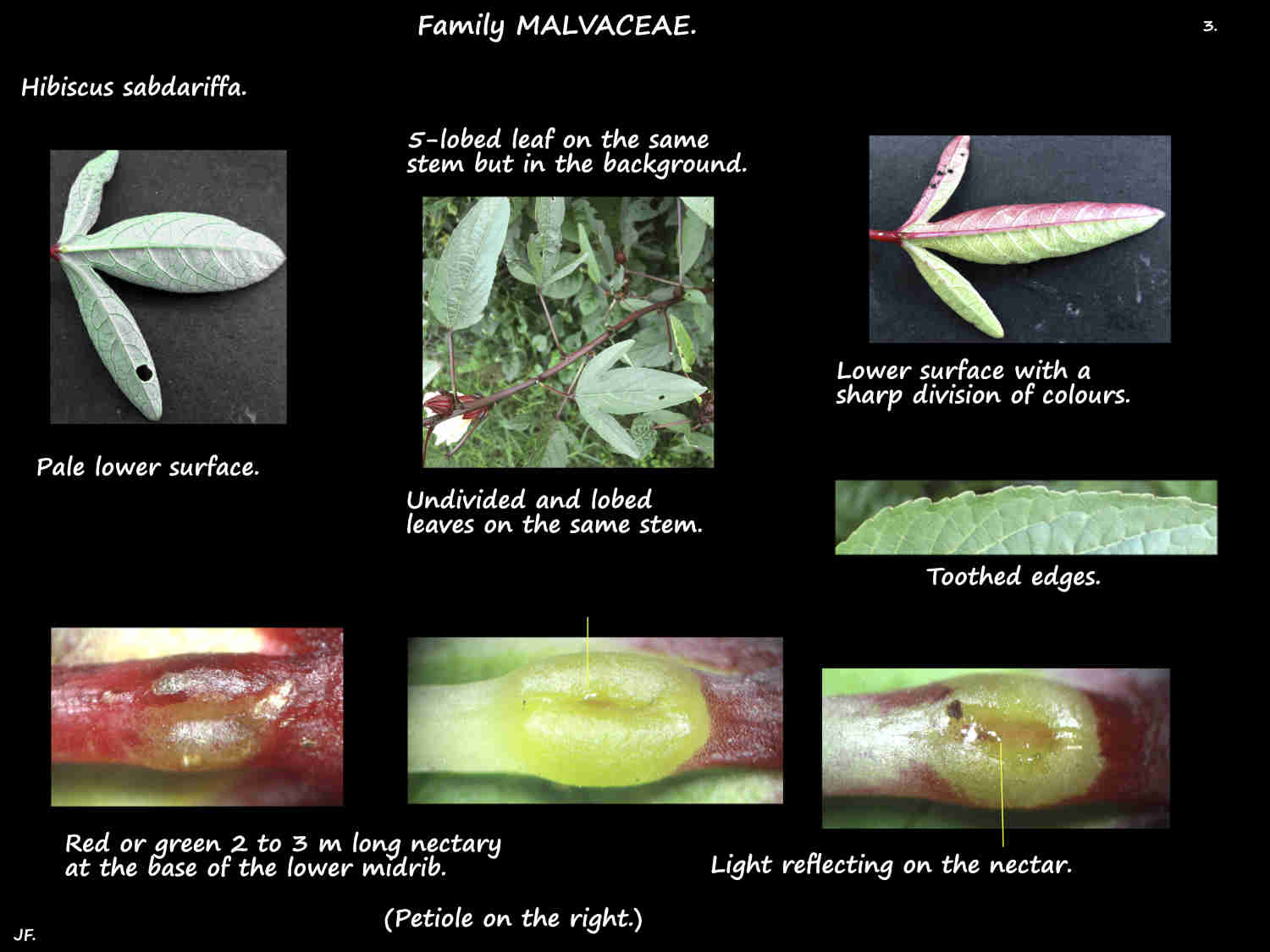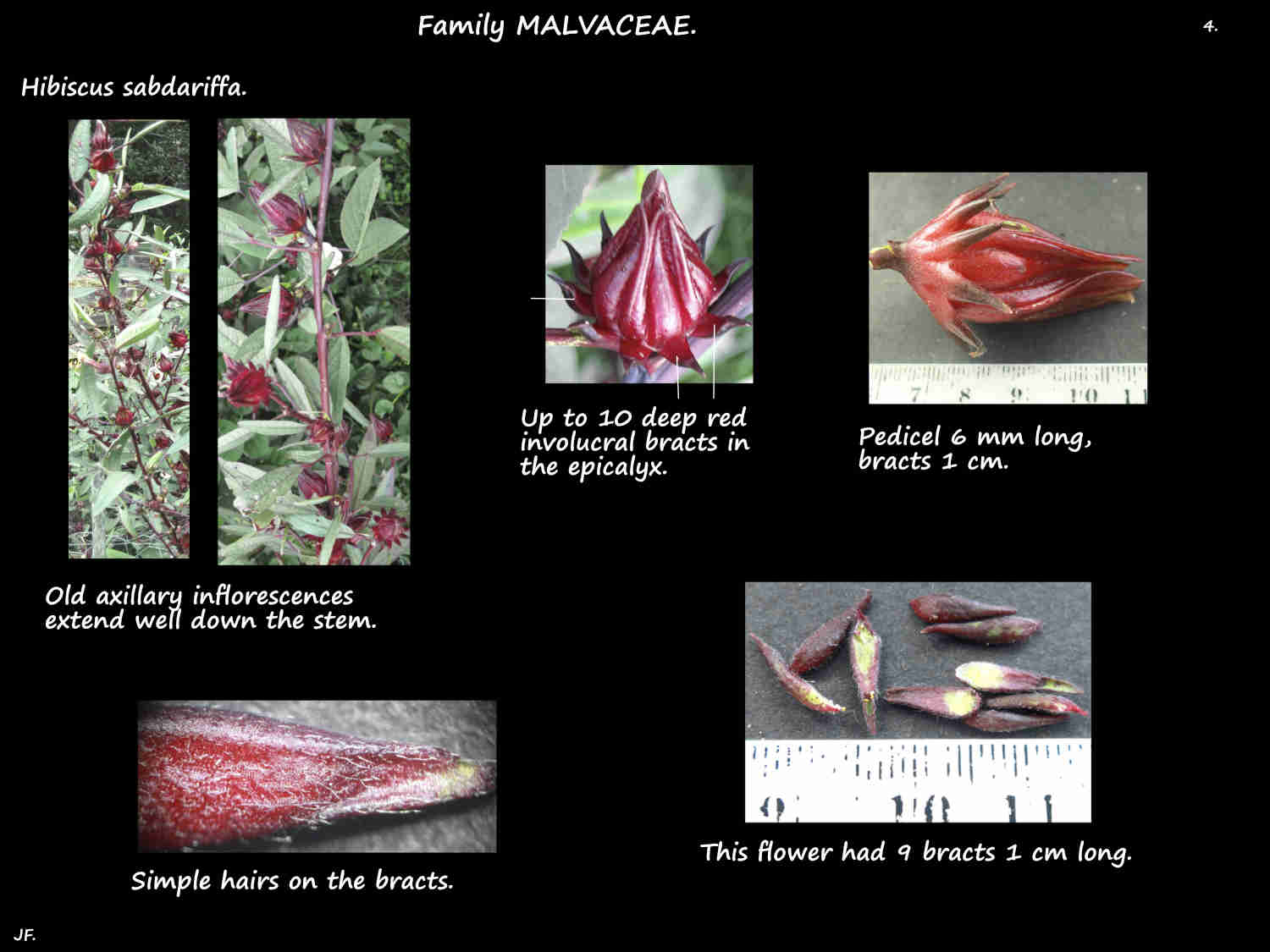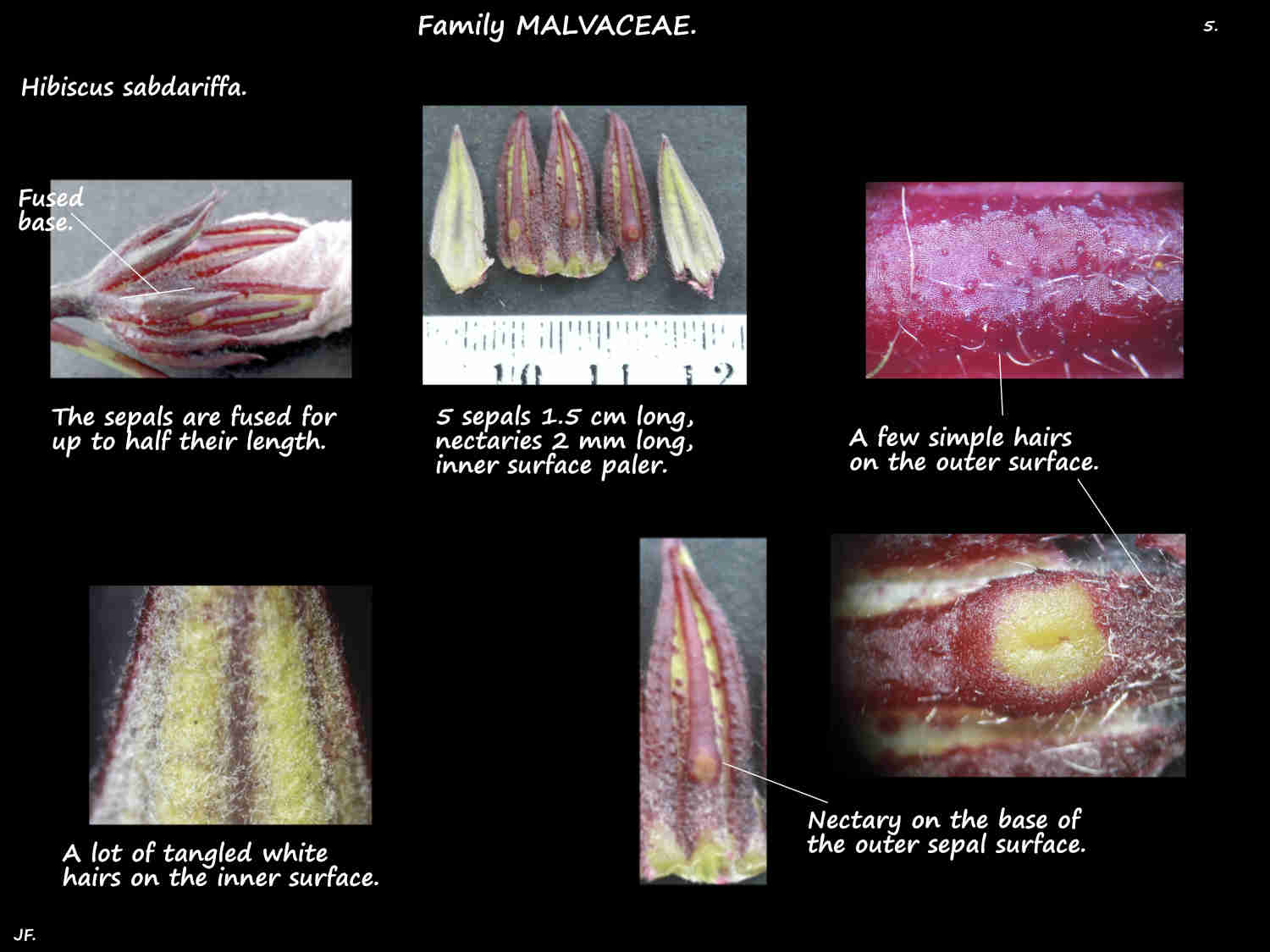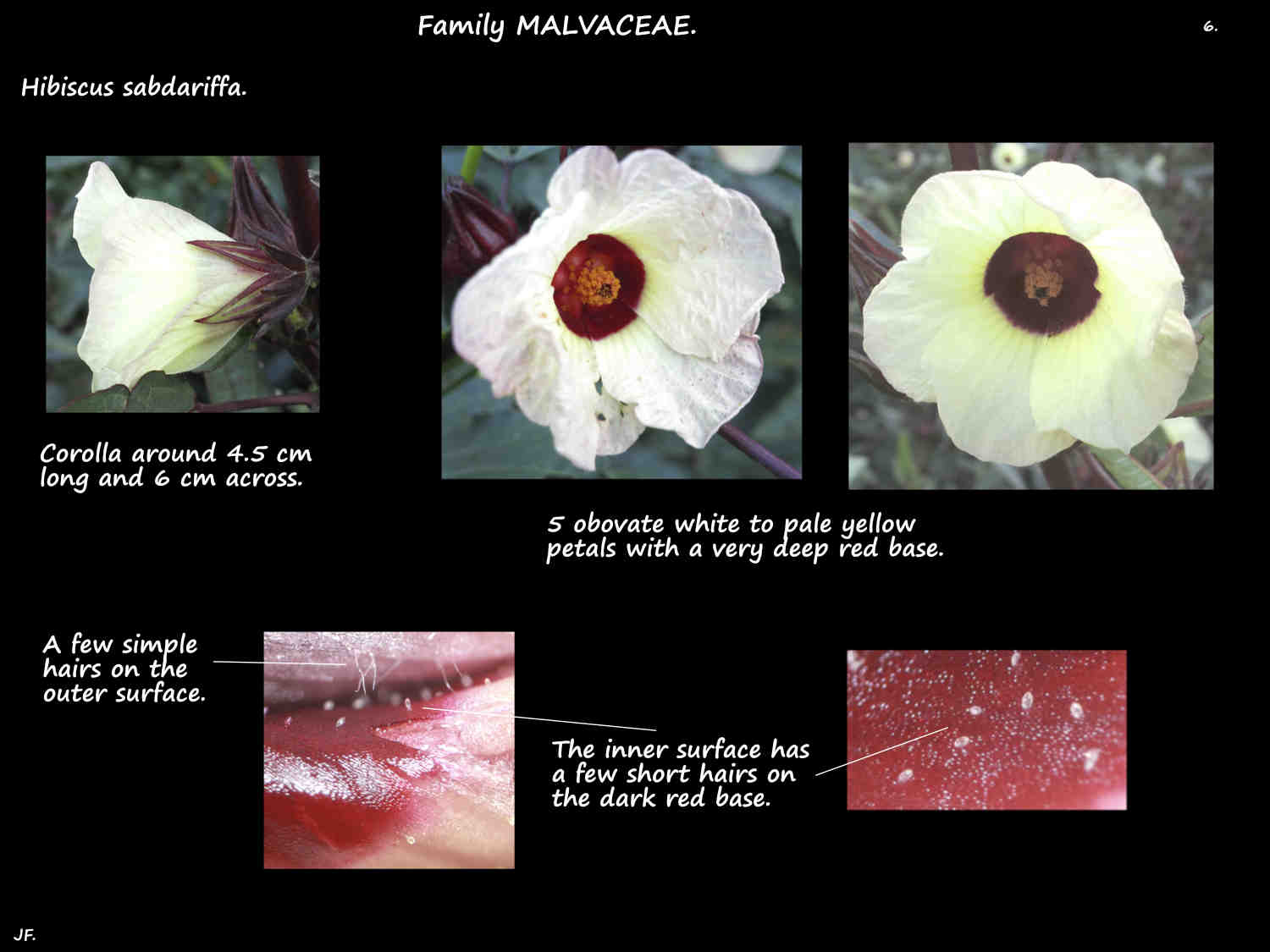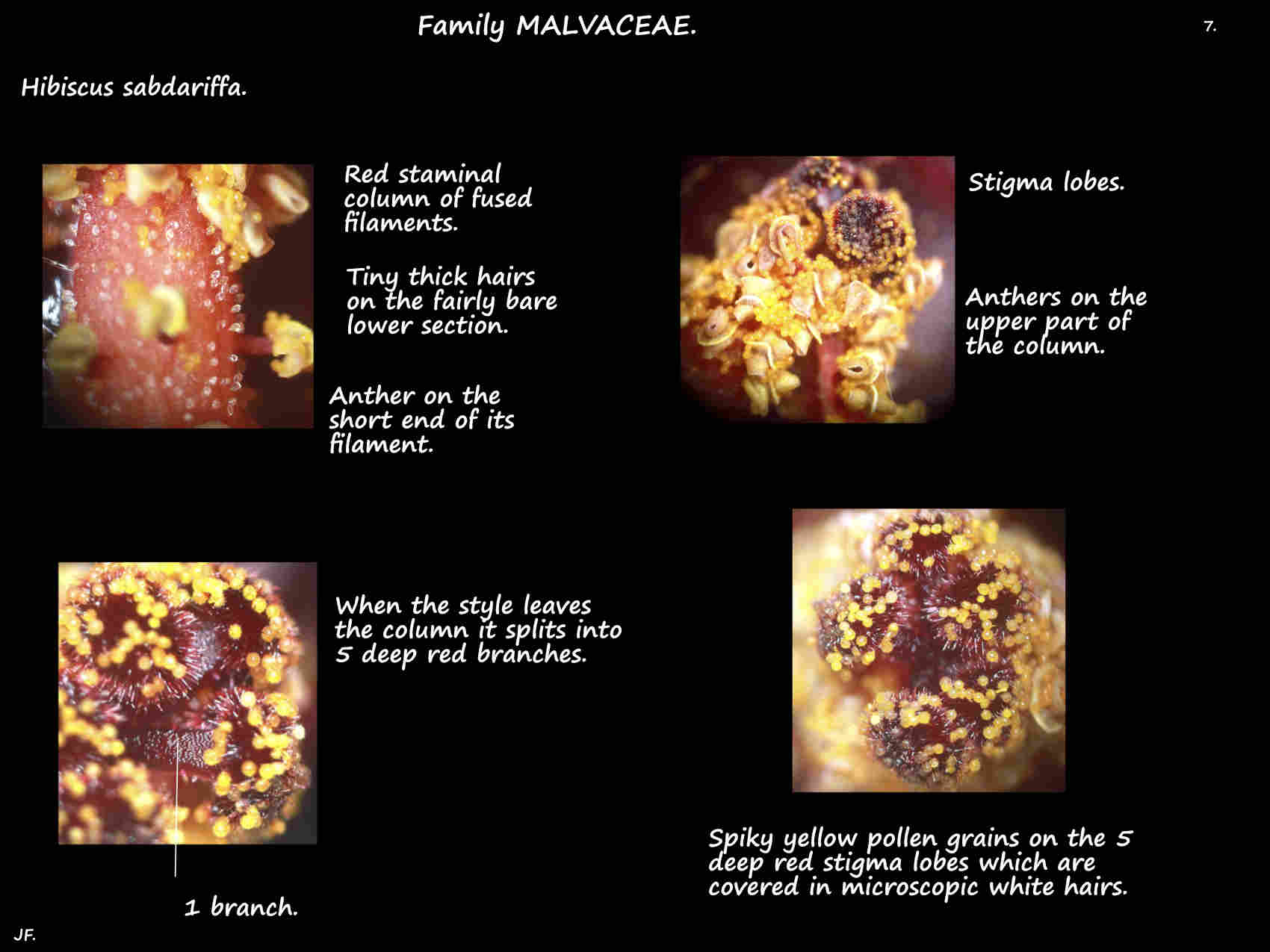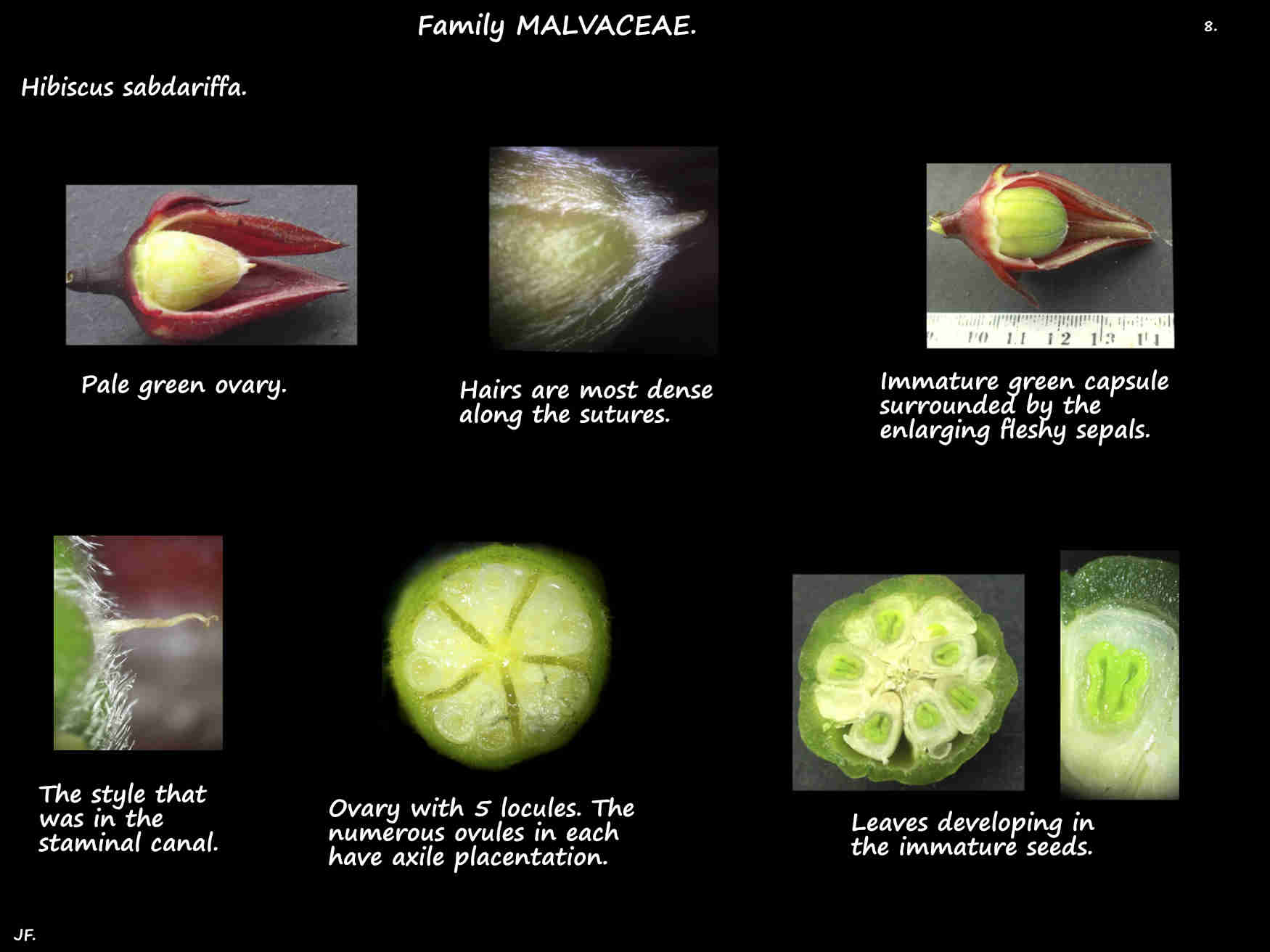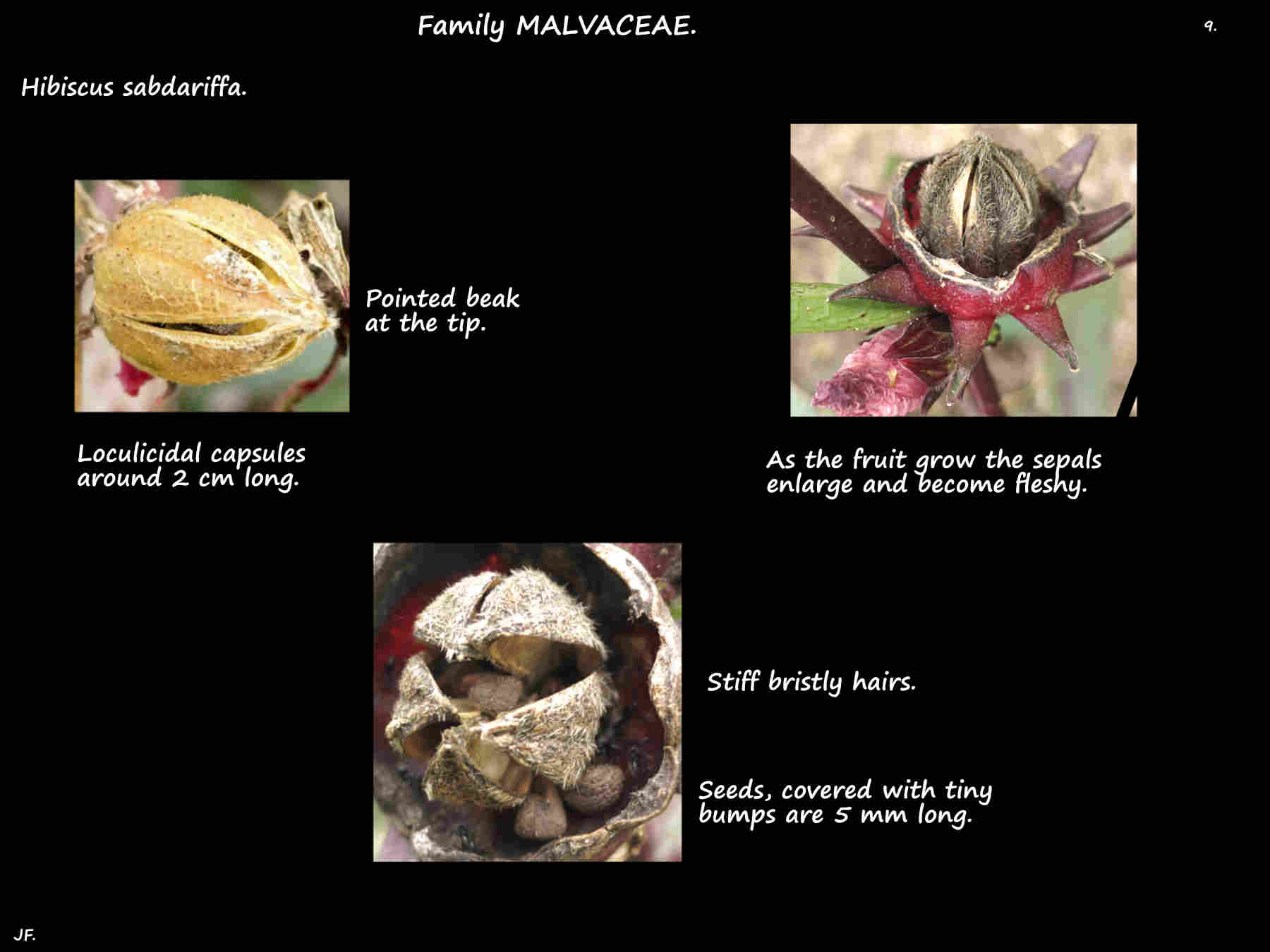Hibiscus sabdariffa.
Family Malvaceae > Subfamily Malvoideae > Tribe Hibisceae.
The Roselle or Rosella, from Africa is naturalised in eastern Queensland.
They are annual herbs or small perennial woody shrubs 2 to 3 m high.
The erect green to deep red stems branch near the base.
Stems are usually smooth but there may be a few simple hairs.
The alternately arranged leaves are on a petiole up to around 6 cm long.
It also may be smooth or have some hairs.
At the base is a pair of narrow triangular stipules up to 1.5 cm long.
The shape and size of the blades is variable even on the same plant.
Typically they are shallow to deeply divided into 3 or 5 lobes of various lengths.
The lobes are narrowly elliptic with pointed tips and toothed edges.
Some narrowly elliptic leaves are undivided.
Leaves are red, green or a mix of both, smooth or with a few prickly hairs underneath.
At the base of the midrib on the lower surface is a raised 2 to 3 mm long nectar gland.
Inflorescences are solitary flowers in the leaf axils from the tip to well down the stems.
Flowers are on a stalk or pedicel only a few mms long.
The epicalyx has up to 10 deep red lanceolate involucral bracts up to 1 cm long.
They lie immediately under the calyx and can be smooth or have a few simple hairs.
The sepals in the calyx are fused for up to half their length with 5 narrow ovate lobes.
Initially about 1.5 cm long the sepals become larger and fleshy as the fruit matures.
The inner surface of the lobes have matted white hairs.
At the base of the mid vein on the outer surface of each lobe is a nectary.
The 5 obovate petals are around 4.5 cm long and the corolla around 6 (5 to 10) cm across.
They are white to pale yellow and usually have a very dark purplish-red base.
The filaments of the numerous stamens are fused into a staminal column.
The lower section is bare apart from a few short hairs.
Anthers, on the short filament ends are along the upper part.
The superior ovary, covered in long pale hairs has 5 locules each with numerous ovules.
Exiting the staminal column the style branches into 5 short arms holding the capitate stigmas.
The fruit are ovate loculicidal capsules around 2 cm long with a pointed tip.
They typically have stiff bristly hairs and are largely covered by the enlarged fleshy calyx.
Each chamber has numerous brown seeds around 5 mm long.
There are varieties with pale yellow or green calyces and a few cultivars.
J.F.

